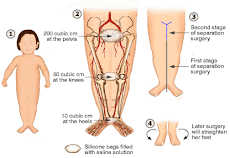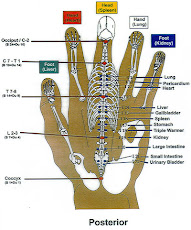.
Jill Stefko: ANPSI ( a must read !!!)
Earthquake dog:

http://pets.thenest.com/cats-behave-theyre-predicting-earthquake-8330.html
Unusual Animal Behavior - In 1920, the largest earthquake to hit China with a magnitude of 8.5 occurred in Haiyuan County, Ninghxia Province. According to reports of eyewitnesses, prior to this earthquake, wolves were seen running around in packs, dogs were barking unusually, and sparrows were flying around wildly. It is reported that prior to the 6.8 magnitude earthquake in 1966 in Hsingtai County, Hopei Province, in Northern China, all the dogs at a village near the epicenter had deserted their kennels and thus survived the disaster.
Prior to the earthquake of July 18, 1969, (magnitude 7.4) in the Pohai Sea, unusual behavior was observed in seagulls, sharks, and five different species of fish. Based on observations of unusual behavior of giant pandas, deer, yaks, loaches, tigers and other animals, a warning was issued at the Tientsin People's Park Zoo, two hours before the earthquake struck.
The Chinese began to study systematically the unusual animal behavior, and the Haicheng earthquake of February 1975 was predicted successfully as early as in mid-December of 1974. The most unusual circumstance of animal behavior was that of snakes that came out of hibernation and froze on the surface of the earth. Also a group of rats appeared. These events were succeeded by a swarm of earthquakes at the end of December 1974. During the following month, in January 1975, thousands of reports of unusual animal behavior were received from the general area. Local people saw hibernating snakes coming out from their holes and into the snow. In the first three days in February the activity intensified even more and unusual behavior of the larger animals such as cows, horses, dogs and pigs was reported. On February 4, 1975, an earthquake of magnitude 7.3 struck the Haicheng County, Liaoning Province.
More instances of unusual animal behavior were reported. A stock breeder in northern China, feeding his animals before dawn on July 28, 1976, in the area of the Kaokechuang People's Commune, approximately 40 kilometers away from the city of Tangshan, reported that his horses and mules instead of eating were jumping and kicking until they finally broke loose and ran outside. A few seconds later, a dazzling white flash illuminated the sky. Tremendous rumbling noises were heard as a 7.8 magnitude earthquake struck the Tangshan area.
Other reports of unusual animal behavior prior to the occurrence of earthquakes have been reported in the literature and in books. Such unusual animal behavior included goats refusing to go into pens; cats and dogs picking up their offspring and carrying them outdoors; pigs squealing strangely; chickens dashing out of the coops in the middle of the night; fish dashing about aimlessly; and birds leaving their nests. It has also been reported that zoo animals refused to go back into their shelters at night; snakes, lizards and other small mammals evacuated their underground nests; insects congregated in huge swarms near the seashores; cattle sought higher ground; domestic animals became agitated; and wild birds left their usual habitats.
Surveys done in China show that the largest number of cases of unusual animal behavior precede the earthquake, particularly in the 24 hours before it strikes. In other parts of China where major earthquakes have been preceded by foreshocks, unusual behavior in rats, fish, and snakes were observed as early as three days prior to the earthquake, but continuing to several hours, or even a few minutes before.
Studies of Animal Behavior
Throughout China's long history, unusual behavior has been observed in every kind of common animal. Most of the behavior falls into the category of unusual restlessness and disorientation.
Since animals have the capability of acting as predictors of earthquakes, the Chinese scientists have carried out surveys of animal behavior variations prior to earthquakes. A team of scientists including biologists, geophysicists, chemists, meteorologists, and biophysicists conducted a survey in the Tangshan area and in 400 communes in 48 counties around it after the 1976 earthquake. The scientists visited a number of places that were hit by other destructive earthquakes and, through interviews and discussions with local people, collected information on over 2,000 cases of unusual animal behavior occurring prior to an earthquake. The majority of the reports involved domestic animals. Based on this survey a preliminary report was prepared by the Chinese identifying 58 kinds of domestic and wild animals that had demonstrated unusual behavior.
The principal focus of research work in China has been on the behavior of pigeons. Biological studies on pigeons determined that a hundred tiny units exist between the tibia and fibula on a pigeon's leg. These nerve units are connected to the nerve center, and are very sensitive to vibrations. Scientists determined that prior to an earthquake of magnitude 4.0, which occurred in the area of the study, fifty pigeons that had severed connections between the tibia, fibula, and the nerve centers, remained calm before the earthquake, while those with normal connections became startled and flew away.
Because of the success in monitoring unusual animal behavior for the prediction of certain earthquakes, the Chinese, who have pioneered this work, have looked into ways to construct instruments that would duplicate the sensory organs of animals which were able to monitor, and sense, stimuli preceding an earthquake. Researchers found it very difficult to understand the mechanism of response stimuli. Physical or chemical stimuli come out of the earth prior to an earthquake and these must be the stimuli that animals can sense. For example, dogs may be able to hear the microfacturing of rocks a few milliseconds before a quake shock reaches the surface. Electromagnetic changes in the earth prior to an earthquake may be sensed by such animals as sharks and catfish which have low or high frequency receptors and sense such changes actively or passively. Also such electromagnetic field changes could be affecting migrating birds and the navigational ability of fish.
Mechanisms of Animal Responses
What is the sensory mechanism of animals that controls their responses to changes related to an impending earthquake? As mentioned earlier, the behavior of an animal might be subject to changes in the magnetic field preceding a major earthquake and such changes may be sensed by energy transfer at the electron level which, in turn, cause changes in the cellular behavior, or response. The living cell is essentially an electrical device and a micromolecular structure, and the sensory organs are all interconnected. Electromechanic changes occurring prior to the occurrence of a large earthquake may be sensed by certain animals and filtered, then instinctively interpreted. Thus animals may have the means and sensitivity to sort out and discriminate the threatening precursory signals of an impending earthquake, thus activating a behavior pattern for survival.
These precursory electromagnetic or electromechanic changes which precede an earthquake, although mixed with background noise, must be filtered by animals and coordinated through their sensory response to the total environment. Thus, behavior is determined by the sensitivity of the different component parts of the living system to the surrounding medium. Experiments with new instruments and electronic solid state sensors are being used now to determine animal response to impending catastrophic occurrences.
The benefit from such research would be in duplicating the sensory responses of animals to construct equally responsive instruments that can record or monitor these precursory changes. Thus, observing and studying animal behavior could lead to better earthquake prediction instrumentation.
This cat feels it when somebody is about to die...
Previous post
.

Jill Stefko: ANPSI ( a must read !!!)
Earthquake dog:

http://pets.thenest.com/cats-behave-theyre-predicting-earthquake-8330.html
Unusual Animal Behavior - In 1920, the largest earthquake to hit China with a magnitude of 8.5 occurred in Haiyuan County, Ninghxia Province. According to reports of eyewitnesses, prior to this earthquake, wolves were seen running around in packs, dogs were barking unusually, and sparrows were flying around wildly. It is reported that prior to the 6.8 magnitude earthquake in 1966 in Hsingtai County, Hopei Province, in Northern China, all the dogs at a village near the epicenter had deserted their kennels and thus survived the disaster.
Prior to the earthquake of July 18, 1969, (magnitude 7.4) in the Pohai Sea, unusual behavior was observed in seagulls, sharks, and five different species of fish. Based on observations of unusual behavior of giant pandas, deer, yaks, loaches, tigers and other animals, a warning was issued at the Tientsin People's Park Zoo, two hours before the earthquake struck.
The Chinese began to study systematically the unusual animal behavior, and the Haicheng earthquake of February 1975 was predicted successfully as early as in mid-December of 1974. The most unusual circumstance of animal behavior was that of snakes that came out of hibernation and froze on the surface of the earth. Also a group of rats appeared. These events were succeeded by a swarm of earthquakes at the end of December 1974. During the following month, in January 1975, thousands of reports of unusual animal behavior were received from the general area. Local people saw hibernating snakes coming out from their holes and into the snow. In the first three days in February the activity intensified even more and unusual behavior of the larger animals such as cows, horses, dogs and pigs was reported. On February 4, 1975, an earthquake of magnitude 7.3 struck the Haicheng County, Liaoning Province.
More instances of unusual animal behavior were reported. A stock breeder in northern China, feeding his animals before dawn on July 28, 1976, in the area of the Kaokechuang People's Commune, approximately 40 kilometers away from the city of Tangshan, reported that his horses and mules instead of eating were jumping and kicking until they finally broke loose and ran outside. A few seconds later, a dazzling white flash illuminated the sky. Tremendous rumbling noises were heard as a 7.8 magnitude earthquake struck the Tangshan area.
Other reports of unusual animal behavior prior to the occurrence of earthquakes have been reported in the literature and in books. Such unusual animal behavior included goats refusing to go into pens; cats and dogs picking up their offspring and carrying them outdoors; pigs squealing strangely; chickens dashing out of the coops in the middle of the night; fish dashing about aimlessly; and birds leaving their nests. It has also been reported that zoo animals refused to go back into their shelters at night; snakes, lizards and other small mammals evacuated their underground nests; insects congregated in huge swarms near the seashores; cattle sought higher ground; domestic animals became agitated; and wild birds left their usual habitats.
Surveys done in China show that the largest number of cases of unusual animal behavior precede the earthquake, particularly in the 24 hours before it strikes. In other parts of China where major earthquakes have been preceded by foreshocks, unusual behavior in rats, fish, and snakes were observed as early as three days prior to the earthquake, but continuing to several hours, or even a few minutes before.
Studies of Animal Behavior
Throughout China's long history, unusual behavior has been observed in every kind of common animal. Most of the behavior falls into the category of unusual restlessness and disorientation.
Since animals have the capability of acting as predictors of earthquakes, the Chinese scientists have carried out surveys of animal behavior variations prior to earthquakes. A team of scientists including biologists, geophysicists, chemists, meteorologists, and biophysicists conducted a survey in the Tangshan area and in 400 communes in 48 counties around it after the 1976 earthquake. The scientists visited a number of places that were hit by other destructive earthquakes and, through interviews and discussions with local people, collected information on over 2,000 cases of unusual animal behavior occurring prior to an earthquake. The majority of the reports involved domestic animals. Based on this survey a preliminary report was prepared by the Chinese identifying 58 kinds of domestic and wild animals that had demonstrated unusual behavior.
The principal focus of research work in China has been on the behavior of pigeons. Biological studies on pigeons determined that a hundred tiny units exist between the tibia and fibula on a pigeon's leg. These nerve units are connected to the nerve center, and are very sensitive to vibrations. Scientists determined that prior to an earthquake of magnitude 4.0, which occurred in the area of the study, fifty pigeons that had severed connections between the tibia, fibula, and the nerve centers, remained calm before the earthquake, while those with normal connections became startled and flew away.
Because of the success in monitoring unusual animal behavior for the prediction of certain earthquakes, the Chinese, who have pioneered this work, have looked into ways to construct instruments that would duplicate the sensory organs of animals which were able to monitor, and sense, stimuli preceding an earthquake. Researchers found it very difficult to understand the mechanism of response stimuli. Physical or chemical stimuli come out of the earth prior to an earthquake and these must be the stimuli that animals can sense. For example, dogs may be able to hear the microfacturing of rocks a few milliseconds before a quake shock reaches the surface. Electromagnetic changes in the earth prior to an earthquake may be sensed by such animals as sharks and catfish which have low or high frequency receptors and sense such changes actively or passively. Also such electromagnetic field changes could be affecting migrating birds and the navigational ability of fish.
Mechanisms of Animal Responses
What is the sensory mechanism of animals that controls their responses to changes related to an impending earthquake? As mentioned earlier, the behavior of an animal might be subject to changes in the magnetic field preceding a major earthquake and such changes may be sensed by energy transfer at the electron level which, in turn, cause changes in the cellular behavior, or response. The living cell is essentially an electrical device and a micromolecular structure, and the sensory organs are all interconnected. Electromechanic changes occurring prior to the occurrence of a large earthquake may be sensed by certain animals and filtered, then instinctively interpreted. Thus animals may have the means and sensitivity to sort out and discriminate the threatening precursory signals of an impending earthquake, thus activating a behavior pattern for survival.
These precursory electromagnetic or electromechanic changes which precede an earthquake, although mixed with background noise, must be filtered by animals and coordinated through their sensory response to the total environment. Thus, behavior is determined by the sensitivity of the different component parts of the living system to the surrounding medium. Experiments with new instruments and electronic solid state sensors are being used now to determine animal response to impending catastrophic occurrences.
The benefit from such research would be in duplicating the sensory responses of animals to construct equally responsive instruments that can record or monitor these precursory changes. Thus, observing and studying animal behavior could lead to better earthquake prediction instrumentation.
This cat feels it when somebody is about to die...
Previous post
.


















No comments:
Post a Comment